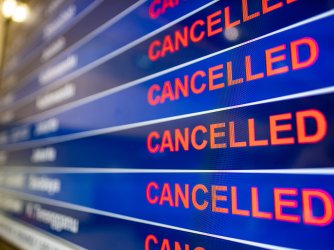Table of Contents
AAUP Report Recommends National and Local Responses to Legal Threat to Academic Freedom
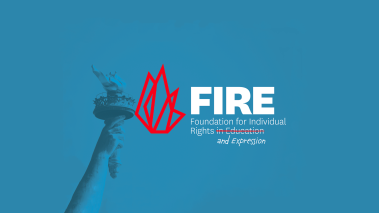
The American Association of University Professors issued a report this week summarizing the legal landscape with respect to professors' academic freedom and recommending numerous courses of action to protect and defend academic freedom. As Erica discussed earlier this week, the report is part of an AAUP campaign to preserve academic freedom in the face of what it deems "judicial hostility or indifference." The hostility stems from the Supreme Court's 2006 decision in Garcetti v. Ceballos and has manifested itself in Garcetti's progeny in the lower courts.
In Garcetti, the Supreme Court held that when public employees speak "pursuant to their official duties," their speech is not protected from employer discipline by the First Amendment. The Supreme Court, however, explicitly reserved the question of whether the same principle holds true for faculty at public colleges and universities, in light of the special importance of academic freedom and the societal benefit of having professors speak freely on issues related to institutional governance and areas of their professional expertise. Nevertheless, several subsequent lower court rulings have in fact applied the Garcetti rule to faculty speech. These decisions disregard the vital importance of allowing faculty to speak without fear of punishment about matters of public concern, as well as time-honored Supreme Court precedents defending the academic freedom of professors on our nation's public campuses. By allowing professorial speech pursuant to official duties—including not only research and teaching, but also related concerns about the curriculum, admissions, class sizes, the academic calendar, and athletics—to be punishable, the progeny of Garcetti pose a broad threat to any faculty criticism of university decisionmaking and governance, despite the fact that faculty members are often in a unique position to offer valuable insight on matters of such obvious public concern.
In the face of this legal threat, the AAUP has undertaken a national campaign to defend academic freedom. This timely initiative includes action items for faculty members and others seeking to defend academic freedom, as well as case materials and relevant legal precedents. The central feature of the AAUP's campaign is a subcommittee report (pdf) titled "Protecting an Independent Faculty Voice: Academic Freedom After Garcetti v. Ceballos." The report provides an overview of the development of the principle of academic freedom in the United States, analyzes legal precedent regarding academic freedom as well as public employee speech, and discusses the Garcetti decision and its aftermath in the lower courts.
Finally, and perhaps most importantly, it recommends a number of initiatives that faculty and their allies can undertake at both the national and the local or institutional level in order to protect academic freedom. At the national level, the report recommends that the AAUP and other national faculty organizations, as well as other academic freedom advocates, "seriously consider framing a more aggressive response" to the erosion of academic freedom. Interestingly, while the report recommends filing amicus curiae briefs in academic freedom cases and otherwise getting involved in litigation, the bulk of the recommendations relate to developing or improving stated university policy on academic freedom, rather than working within the legal process. Consider, for example, the following recommendations:
1. Develop and widely disseminate examples of policy statements that could be adopted at the institutional level explicitly to protect faculty members' speech in regard to institutional matters.... As the AAUP disseminates such language, it should work with other national faculty organizations to issue a joint statement on the value of faculty members' academic freedom and academic responsibilities in governance and in institutional matters, highlighting exemplary handbook language.
...
4. Undertake an empirical national analysis of handbook language on academic freedom in governance and institutional matters at various types of institutions and disseminate the results widely to faculty organizations. Disseminate examples of language to be emulated as well as examples that fail sufficiently to protect academic freedom in institutional matters.
5. Collaborate with organizations of institutions and trustees such as the American Council on Education and the Association of Governing Boards on issuance of a joint statement on the value of faculty members' academic freedom and academic responsibilities in governance and in institutional matters, highlighting examples of handbook language that all parties can endorse.
In accordance with these and related efforts, at the local or institutional level, the AAUP report recommends the following:
1. Carefully assess the adequacy and coverage of existing institutional policies that affect faculty speech or expressive activity....
2. If such policies seem inadequate, or simply do not address the issue at all, faculty groups, whether senates or unions, should create special committees to examine available alternatives, adapt such policies to institutional needs and values, and seek approval from as broad a range of faculty and faculty groups as possible within individual institutions or, if applicable, across multicampus systems. When appropriate language has been developed, every effort should be made by faculty groups to negotiate with and persuade the administration and the governing board of the wisdom of adopting such language.
A major thrust of the AAUP's campaign is to attempt to effect widespread change in university policies on academic freedom and freedom of speech for faculty. I believe this to be a wise move. While I do think that the Supreme Court will ultimately have to address and clarify the Garcetti principle as it relates to college and university faculty speech—and that the legal process should not be wholly abandoned by those who seek to defend academic freedom—the concurrent effort to codify academic freedom rights in university policy will serve faculty members well. As an example, the AAUP report uses the case study of the University of Minnesota, where faculty efforts to have academic freedom rights enshrined in university policy resulted in a strong policy which was adopted by the university's Board of Regents in June. (We covered this faculty initiative, along with a similar effort at the University of Michigan, on The Torch back in March.) The University of Minnesota initiative worked so well that the AAUP report uses the resulting policy, along with two policy drafts of its own, as model policies for other schools to emulate. This success story can be replicated at other campuses if faculty and other advocates for academic freedom follow some of the recommendations of the AAUP report.
The report and the accompanying campaign marks a valuable step forward in the important fight to uphold academic freedom at our nation's colleges and universities. The AAUP's useful recommendations, I hope, will translate into much-needed action from interested parties.
Recent Articles
FIRE’s award-winning Newsdesk covers the free speech news you need to stay informed.
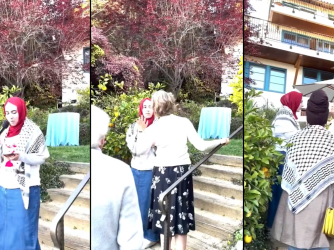
No, the Berkeley Law student didn’t have a First Amendment right to interrupt the dean’s backyard party
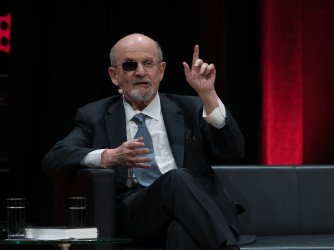
Salman Rushdie calls out left-wing censorship in CBS interview
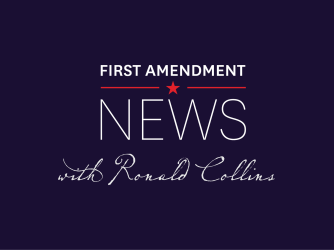
Falsely claiming a First Amendment right at a dinner party at private home — FAN 419.1
